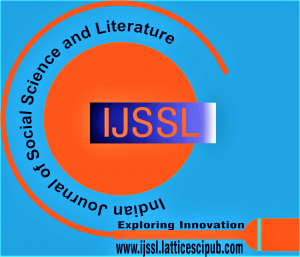![]()
Pluralization in Barman Thar: An Endangered Language
Primly Baruah
Primly Baruah, Research Scholar, Department of Linguistics, Assam University, Silchar, Assam, India.
Manuscript received on 30 May 2025 | First Revised Manuscript received on 09 June 2025 | Second Revised Manuscript received on 17 August 2025 | Manuscript Accepted on 15 September 2025 | Manuscript published on 30 September 2025 | PP: 18-21 | Volume-5 Issue-1, September 2025 | Retrieval Number: 100.1/ijssl.D119404040625 | DOI: 10.54105/ijssl.D119405010925
Open Access | Ethics and Policies | Cite | Zenodo | OJS | Indexing and Abstracting
© The Authors. Published by Lattice Science Publication (LSP). This is an open-access article under the CC-BY-NC-ND license (http://creativecommons.org/licenses/by-nc-nd/4.0/)
Abstract: This paper examines the process of pluralisation in Barman Thar, an endangered language of Assam. This study aims to investigate the morphological and syntactic mechanisms involved in marking plurality in Barman Thar. The data collected for this paper are based solely on primary data gathered through fieldwork in Khoirabari and Tangla, located in Udalguri and Baksa districts of Assam. Singulars are unmarked in Barman Thar, and plurals are marked by suffixes like -taŋ and -phara, both of which are lexically and morphologically conditioned. Other syntactic categories, like numerals and reduplications, are also involved in forming plurality. Tibeto-Burman features, such as copula-drop and the lack of subject-verb agreement, can also be observed here. This paper not only attempts to investigate the Pluralisation process in Barman Thar but also supports the effort to revitalise this endangered language by documenting morphosyntactic patterns.
Keywords: Barman Thar, Pluralization, Reduplication, Numerals
Scope of the Article: Linguistics
